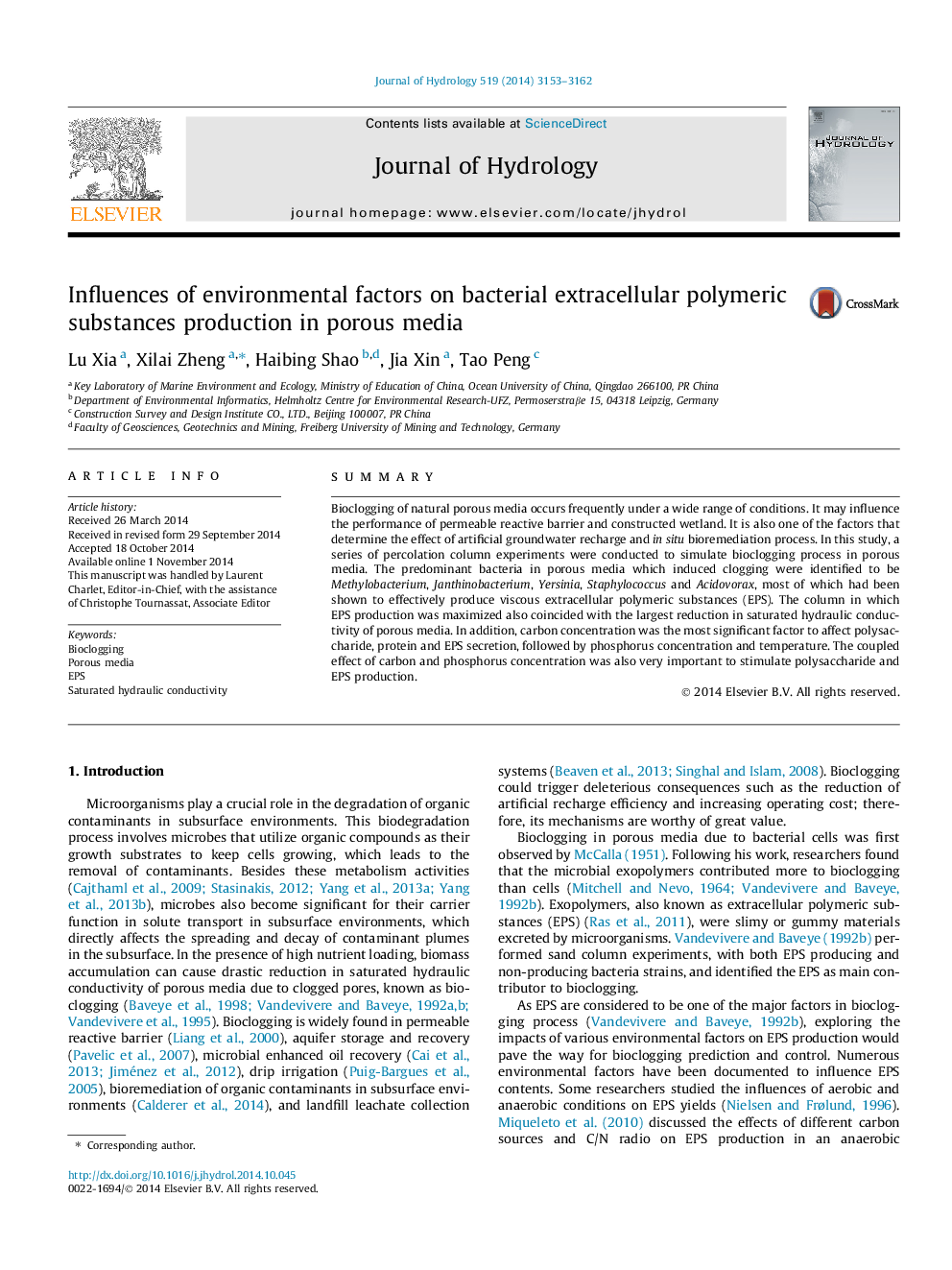| Article ID | Journal | Published Year | Pages | File Type |
|---|---|---|---|---|
| 6412202 | Journal of Hydrology | 2014 | 10 Pages |
â¢The predominant bacteria in porous media were effectively produce viscous EPS.â¢The column where EPS was maximized coincided with the largest reduction in Ks.â¢Carbon affected exopolymers yield most, followed by phosphorus and temperature.â¢The coupled effect of carbon and phosphorus affected exopolymers secretion most.â¢The models were reliable to predict exopolymers yield in porous media.
SummaryBioclogging of natural porous media occurs frequently under a wide range of conditions. It may influence the performance of permeable reactive barrier and constructed wetland. It is also one of the factors that determine the effect of artificial groundwater recharge and in situ bioremediation process. In this study, a series of percolation column experiments were conducted to simulate bioclogging process in porous media. The predominant bacteria in porous media which induced clogging were identified to be Methylobacterium, Janthinobacterium, Yersinia, Staphylococcus and Acidovorax, most of which had been shown to effectively produce viscous extracellular polymeric substances (EPS). The column in which EPS production was maximized also coincided with the largest reduction in saturated hydraulic conductivity of porous media. In addition, carbon concentration was the most significant factor to affect polysaccharide, protein and EPS secretion, followed by phosphorus concentration and temperature. The coupled effect of carbon and phosphorus concentration was also very important to stimulate polysaccharide and EPS production.
